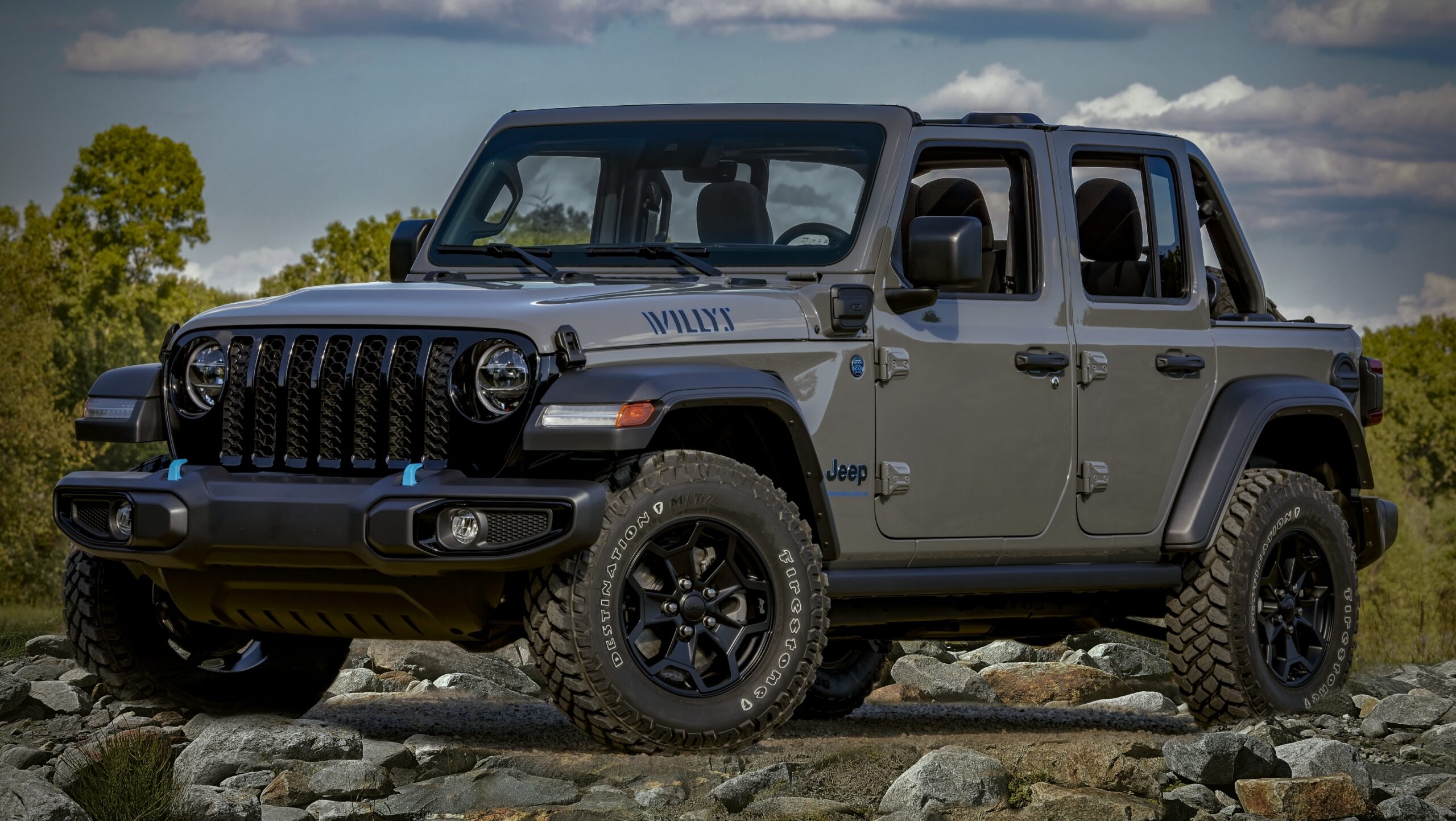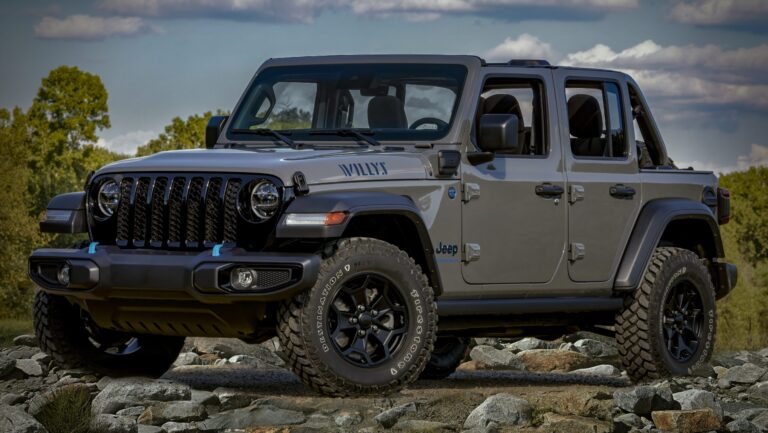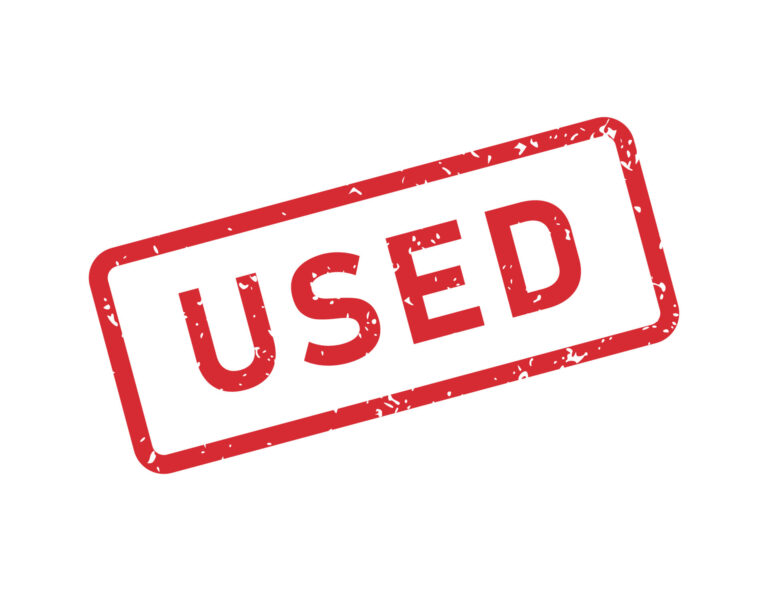Jeep TJ Axles For Sale: A Comprehensive Buyer’s Guide
Jeep TJ Axles For Sale: A Comprehensive Buyer’s Guide jeeps.truckstrend.com
The iconic Jeep Wrangler TJ (1997-2006) holds a special place in the hearts of off-road enthusiasts and casual drivers alike. Known for its robust frame, coil-spring suspension, and classic styling, the TJ is an incredibly capable vehicle right out of the box. However, like any vehicle pushed to its limits, certain components can become weak points. For many TJ owners, especially those venturing into more challenging terrain or running larger tires, the axles often become the primary focus of an upgrade or replacement.
This comprehensive guide, "Jeep TJ Axles For Sale," aims to demystify the world of TJ axles, from understanding your stock setup to navigating the myriad of upgrade options available on the market. Whether you’re dealing with a broken axle, planning a major build, or simply looking to beef up your rig, finding the right axles is paramount to your Jeep’s performance, safety, and longevity.
Jeep TJ Axles For Sale: A Comprehensive Buyer’s Guide
Understanding Your Stock TJ Axles
Before diving into replacements or upgrades, it’s crucial to understand what came stock on most Jeep TJs.
-
Front Axle: Dana 30 (D30)
- Configuration: High-pinion, reverse-cut gears (stronger for front applications).
- Shafts: 27-spline inner and outer shafts.
- Strengths: Adequate for stock tires and moderate trail use. Generally reliable for its intended purpose.
- Limitations: The weakest link for larger tires (33 inches and above) and aggressive off-roading. The axle tubes can bend, and the U-joints and shafts are prone to breaking under stress.


Rear Axle: Dana 35 (D35) with C-clips
- Configuration: Low-pinion, standard-cut gears.
- Shafts: 27-spline shafts held in place by C-clips inside the differential.
- Strengths: Fine for street driving and light trails with stock tires.
- Limitations: Considered the Achilles’ heel of the non-Rubicon TJ. The 27-spline shafts are notoriously weak, especially when combined with lockers or larger tires. The C-clip design means that if a shaft breaks, the wheel can potentially separate from the vehicle, a significant safety concern.

-
Rubicon Axles: Dana 44 (D44) Front and Rear
- Configuration: The highly sought-after factory upgrade. The Rubicon model came equipped with a high-pinion Dana 44 in the front and a low-pinion Dana 44 in the rear, both with 30-spline shafts and factory air lockers (Tru-Loks).
- Strengths: Significantly stronger than the standard D30/D35 setup, capable of handling 35-inch tires with proper reinforcement and aftermarket shafts. The factory lockers are a huge bonus for off-road capability.
Why Upgrade or Replace Your TJ Axles?
The reasons for seeking "Jeep TJ Axles For Sale" are varied but typically fall into a few key categories:
- Damage or Breakage: This is the most common immediate trigger. Bent axle tubes from hard impacts, broken differential carriers from excessive stress, snapped axle shafts, or worn-out bearings can all necessitate a replacement.
- Performance Upgrade: For owners looking to run larger tires (33 inches or more), add aggressive lockers, or engage in more demanding off-roading, stock axles simply won’t cut it. Upgraded axles offer increased strength, improved gear ratios, and better durability.
- Gear Ratio Change: When installing significantly larger tires, re-gearing the axles is essential to restore lost power, improve fuel economy, and maintain drivability. Often, it’s more cost-effective to buy complete axles with the desired gear ratio than to re-gear your existing ones, especially if you’re upgrading axle types anyway.
- Project Build: Starting a custom Jeep build, such as a rock crawler or overland rig, often involves sourcing stronger, wider, or more specialized axles to meet specific performance goals.
Types of Axles Available for TJ Jeeps
The market for TJ axles is diverse, offering options for every budget and build type.
-
1. Stock Replacements (Used Dana 30/35):
- Purpose: Ideal for replacing a damaged stock axle without upgrading, or for someone on a very tight budget doing light trail use.
- Pros: Cheapest option, direct bolt-in.
- Cons: Inherits the weaknesses of the stock axles.
- Where to Find: Junkyards, online marketplaces, forums.
-
2. Direct Bolt-In Upgrades:
- Rubicon Dana 44 (Front & Rear): The most popular factory upgrade. These are direct bolt-in replacements for your D30/D35.
- Pros: Significantly stronger, often come with factory lockers and 30-spline shafts. Maintains factory wheel bolt pattern.
- Cons: Can be expensive due to high demand. Used ones may require rebuilding.
- Ford 8.8 (Rear): A very popular and cost-effective rear axle swap from Ford Explorers (typically 1995-2001).
- Pros: Stronger than a D35, often comes with disc brakes, available with limited-slip differentials, and a wide variety of gear ratios. Relatively inexpensive.
- Cons: Requires welding new TJ-specific brackets (control arm mounts, coil buckets, track bar mount) onto the axle. Different bolt pattern (5×4.5 on TJ, 5×4.5 on some 8.8s, but watch out for 5×5).
- Super 35 Kits: Not a full axle replacement, but an upgrade kit for your existing Dana 35. It typically involves 30-spline chromoly axle shafts, a compatible locker (like an ARB or Detroit), and sometimes larger bearings.
- Pros: Cost-effective way to strengthen your D35 without a full swap.
- Cons: Still uses the D35 housing, which can bend. Still a C-clip axle.
- Rubicon Dana 44 (Front & Rear): The most popular factory upgrade. These are direct bolt-in replacements for your D30/D35.
-
3. Heavy-Duty Aftermarket Axles:
- For the serious off-roader or custom builder, these are complete, purpose-built axle assemblies.
- Examples: Dana 44 (aftermarket versions like Currie RockJock 44, Dynatrac ProRock 44, G2 Axle & Gear), Dana 60, Dana 70, 14-Bolt axles.
- Pros: Unmatched strength and durability, highly customizable (width, bolt pattern, gearing, lockers). Many are full-float designs (no C-clips).
- Cons: Very expensive, often require significant fabrication (custom driveshafts, suspension mounts, steering modifications), and can add considerable weight.
Where to Find Jeep TJ Axles For Sale
Finding the right axles requires knowing where to look:
- Online Marketplaces: Craigslist, Facebook Marketplace, and local online classifieds are great for used axles from private sellers. Be specific in your searches (e.g., "TJ Dana 44," "Ford 8.8 Jeep").
- Specialized Forums & Groups: Jeep-specific forums (like JeepForum.com, WranglerForum.com) and Facebook groups dedicated to TJ parts or off-roading are excellent resources. Members often sell take-off parts or complete builds.
- Junkyards/Salvage Yards: For used stock replacements or donor axles like the Ford 8.8, a local junkyard can be a treasure trove. Be prepared to pull the axle yourself and inspect it thoroughly.
- Aftermarket Retailers: Companies like Quadratec, Summit Racing, Morris 4×4, and directly from manufacturers like Currie, Dynatrac, G2, and TeraFlex, sell brand-new complete axle assemblies.
- Off-Road Shops: Local 4×4 shops often have used take-off axles from customer upgrades or can source new aftermarket units for you.
Key Considerations When Buying TJ Axles
Purchasing axles, especially used ones, requires careful consideration and inspection.
- Condition: This is paramount.
- Straightness: Check for bent axle tubes. A bent tube can cause premature bearing wear, vibrations, and makes setting up gears difficult.
- Housing Integrity: Look for cracks, especially around welds or mounting points.
- Rust: Surface rust is common, but deep, pitting rust can be problematic.
- Differential: Check for leaks around the differential cover and pinion seal. If possible, remove the cover to inspect the gears for chipped teeth or excessive wear.
- Shafts/Unit Bearings: Ask about the condition of the inner and outer axle shafts, U-joints, and unit bearings. These are wear items and might need replacement.
- Gear Ratio: Ensure the axle has the gear ratio you need, or be prepared to re-gear it. Remember, if you change one axle’s ratio, you must change the other to match, or your transfer case will bind and break.
- Locker/Limited Slip: Some axles come with lockers or limited-slip differentials. Verify their functionality if present. This can be a significant added value.
- Bolt Pattern: Most TJ axles are 5×4.5". Be aware that some aftermarket or swapped axles (like certain Ford 8.8s or heavy-duty axles) might have a different bolt pattern (e.g., 5×5", 6×5.5", 8-lug). This will require new wheels or adapters.
- Width: Stock TJ axle width is roughly 60.5 inches (wheel mounting surface to wheel mounting surface). Some aftermarket axles are wider for increased stability, which might require wider fenders.
- Completeness: What’s included? Just the housing? Or does it come with shafts, brakes, knuckles, unit bearings, and a differential? The more complete, the easier the installation, but typically the higher the price.
- Price vs. Value: Don’t just look for the cheapest option. A "cheap" axle that needs extensive rebuilding or doesn’t meet your strength requirements will end up costing you more in the long run.
- Shipping/Local Pickup: Axles are heavy and bulky. Factor in shipping costs or the logistics of picking it up yourself.
Installation & Beyond
Once you’ve secured your new-to-you axles, the next step is installation.
- DIY vs. Professional: Swapping axles is a significant mechanical undertaking. If you have the right tools, mechanical aptitude, and a safe workspace (jack stands, proper lifting equipment), it’s doable. However, if you’re unsure, or if the swap involves welding or complex suspension geometry changes (like with a Ford 8.8), it’s best left to a professional off-road shop.
- Required Tools: You’ll need a good floor jack, sturdy jack stands, a comprehensive set of wrenches and sockets, a torque wrench, and potentially a grinder or cutting tools for bracket removal.
- Additional Parts: Don’t forget new U-bolts, brake lines (longer ones if lifting), possibly new driveshafts (especially if changing pinion angles or lengths), and control arm mounts if swapping to an axle that requires them.
- Re-gearing & Setup: If you’re changing the gear ratio or installing new gears, this is a precise job that often requires specialized tools and knowledge to set backlash and pinion depth correctly. Incorrect setup will lead to premature failure.
- Brake Upgrades: If your new axle comes with disc brakes and your old one had drums, you’ll need to sort out the brake lines and potentially a proportioning valve.
Price Table: Jeep TJ Axles For Sale (Estimates)
This table provides estimated price ranges for various Jeep TJ axle options. Prices can vary significantly based on condition, included components (gears, lockers, shafts), brand, and market demand.
| Axle Type | Condition | Estimated Price Range (USD) | Notes |
|---|---|---|---|
| Stock Dana 30 (Front) | Used | $150 – $400 | Basic replacement, usually without gears/locker. |
| Stock Dana 35 (Rear) | Used | $100 – $350 | Basic replacement, often without gears/locker. High chance of needing work. |
| Rubicon Dana 44 (Front) | Used | $1,000 – $2,500 | Highly sought after. Price depends on condition, gears, and if locker is functional. |
| Rubicon Dana 44 (Rear) | Used | $800 – $2,000 | Popular upgrade. Price depends on condition, gears, and if locker is functional. |
| Ford 8.8 (Rear) | Used | $150 – $450 | Donor axle (Explorer). Does NOT include TJ mounting brackets. |
| Ford 8.8 (Rear) with Brackets | Used/Fab | $500 – $1,200 | Includes welded TJ brackets, ready for install. Prices vary greatly by builder. |
| Aftermarket Dana 44 (Front) | New | $3,500 – $6,000+ | Bolt-in, stronger than stock D44. Brands like Currie, Dynatrac, G2. Price depends on options (locker, gears). |
| Aftermarket Dana 44 (Rear) | New | $3,000 – $5,500+ | Bolt-in, stronger than stock D44. Brands like Currie, Dynatrac, G2. Price depends on options (locker, gears). |
| Heavy-Duty Axle (D60/14B) | New | $6,000 – $10,000+ per axle | For extreme builds. Requires extensive fabrication. Often custom-built. |
Frequently Asked Questions (FAQ)
Q: Can I put Dana 44s from a Rubicon in my non-Rubicon TJ?
A: Yes! Rubicon Dana 44s are a direct bolt-in swap for your non-Rubicon TJ’s Dana 30 front and Dana 35 rear axles. They are highly sought after for this reason.
Q: Is a Ford 8.8 a direct bolt-in for my TJ?
A: No. While it’s a popular swap, a Ford 8.8 axle requires cutting off the original Ford mounting brackets and welding on new Jeep TJ-specific brackets (for control arms, coil springs, track bar, and shock mounts). This is a job for someone proficient in welding and fabrication.
Q: How do I know if a used axle is bent?
A: Visually inspect the axle tubes for any bowing or kinks. You can also lay a straight edge along the axle tube from end to end. If there’s a visible gap in the middle or at the ends, it might be bent. Professional shops can also put an axle on a jig to check for straightness.
Q: What’s the difference between a Dana 35 and a Super 35?
A: A Dana 35 is the stock rear axle. A "Super 35" refers to an upgrade kit for the Dana 35, typically including stronger 30-spline chromoly axle shafts and a compatible locker. While it significantly strengthens the shafts, the housing itself is still the original Dana 35 and can still bend or break under extreme stress.
Q: Do I need to re-gear both axles if I only replace one?
A: Yes, absolutely! Your front and rear axle gear ratios must match perfectly. If they don’t, your transfer case will bind up, leading to catastrophic failure, especially when engaging 4WD. Even a small difference in ratio can cause problems.
Q: What’s a common gear ratio for 35-inch tires on a TJ?
A: For 35-inch tires on a TJ, common gear ratios are 4.88:1 or 5.13:1, especially if you have the 4.0L engine. The ideal ratio depends on your transmission (manual vs. automatic), engine, and intended use (daily driver vs. dedicated trail rig).
Conclusion
Navigating the market for "Jeep TJ Axles For Sale" can seem daunting, but with the right knowledge, you can make an informed decision that will significantly enhance your Jeep’s capabilities. Whether you’re replacing a broken component or embarking on a full-blown upgrade, understanding the strengths and weaknesses of each axle type, knowing where to find them, and meticulously inspecting potential purchases are crucial steps.
Remember, your axles are the backbone of your drivetrain, directly impacting your Jeep’s performance, reliability, and safety, especially when you venture off the beaten path. Invest wisely, and your TJ will reward you with years of adventurous driving, tackling obstacles with newfound confidence and strength.




